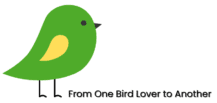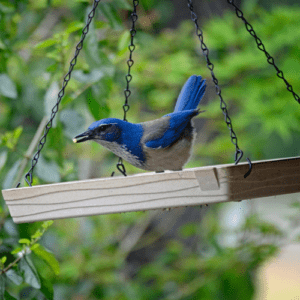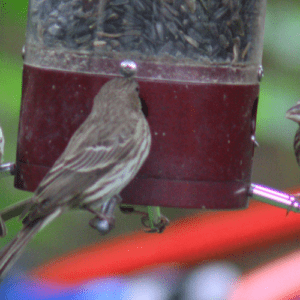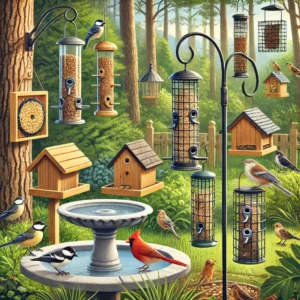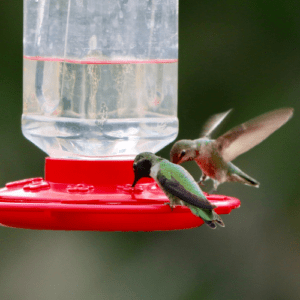If you’re like me, the sight of a hummingbird hovering mid-air is pure magic. When I first started my birding journey, I was determined to make my yard a haven for these incredible little creatures. I went out, bought a hummingbird feeder, filled it with homemade nectar, and hung it right in the middle of my yard. And then… nothing. No birds. Not a single one.
I remember sitting there, staring at the feeder, feeling defeated. Was my yard not “hummingbird-friendly”? Did I do something wrong? It wasn’t until I started researching and experimenting that I realized the problem wasn’t the feeder—it was where I placed it. Learning where to hang a hummingbird feeder made all the difference, and now, my backyard is alive with the buzz of tiny wings.
If you’re wondering where to place a hummingbird feeder to attract these beautiful birds, I’ve got some tips from my own trial-and-error experiences. These are the tricks that turned my yard into a hummingbird paradise, and I hope they help you too.
Why Placement Is the Secret to Success
At first, I thought hanging the feeder anywhere would do the trick. It’s bright, filled with sweet nectar—what’s not to love, right? Wrong. Hummingbirds are picky about where they feed. They want safety, comfort, and easy access. If those needs aren’t met, they’ll fly right past your feeder without a second glance.
When I started paying attention to what hummingbirds like, everything changed. They began showing up regularly, and now, I get to watch these tiny miracles every day. Where you place a hummingbird feeder truly matters more than you think.
My Best Tips for Where to Hang a Hummingbird Feeder
1. Find a Quiet Spot
Hummingbirds are small but cautious. They don’t like loud noises or sudden movement, which I learned the hard way when I hung my first feeder near the kids’ swing set. Every time a bird approached, it got spooked and flew away.
I moved the feeder to a quieter spot near some shrubs, away from foot traffic, and immediately noticed more visits. If you want to attract hummingbirds, look for a calm, low-traffic area in your yard. They’ll feel safer and are much more likely to stop by.
2. Hang It Near Flowers
This was a game-changer for me. Hummingbirds are naturally drawn to nectar-rich flowers like bee balm, salvia, and trumpet vine. When I started planting these near my feeder, the birds began to visit more often. It turns out, they see the flowers first and then notice the feeder nearby.
If you don’t already have flowers hummingbirds love, consider planting a few near your feeder. Not only will it make your yard look beautiful, but it will also create a natural feeding zone that hummingbirds can’t resist.
3. Choose Partial Shade
At first, I thought hanging my feeder in full sun was the way to go. It seemed like the birds would spot it more easily. But I quickly realized that the nectar spoiled faster in the heat, and the hummingbirds avoided the feeder during the hottest parts of the day.
Now, I place my feeders in spots that get partial shade, like under a tree or near my covered porch. The nectar stays fresh longer, and the birds seem more comfortable feeding in a cooler, shaded area. Plus, it’s easier for me to watch them without squinting in the sun!
4. Hang It at Eye Level
This one is a simple but important tip. When I hung my feeder too high, I noticed it wasn’t getting much attention. Lowering it to eye level made a huge difference. Not only do the birds find it more easily, but I also get a better view of them feeding.
Now, I hang my feeders at a height where I can see them from my kitchen window or porch. Watching a hummingbird hover just a few feet away never gets old. If you’re wondering where is the best place to hang a hummingbird feeder, keep it where you can enjoy the show.
5. Protect It from Wind
I live in a fairly breezy area, and I used to hang my feeder on a tall pole in an open spot. The wind would swing it around, and the birds didn’t seem interested. It wasn’t until I moved the feeder to a more sheltered location—near a fence or under a tree—that the visits picked up.
Hummingbirds prefer stable feeding spots. A feeder that’s swaying in the wind makes them feel unsafe, so try placing it somewhere protected. It’ll make a big difference.
6. Keep Predators Away
This is a lesson I had to learn the hard way. One day, I noticed my neighbor’s cat lurking under the feeder, waiting for an unsuspecting bird to swoop in. It broke my heart, and I knew I had to make some changes.
Now, I hang my feeders in open areas where cats and other predators can’t hide. I also use poles with squirrel baffles to keep squirrels from stealing the nectar. Making the feeder a safe spot for the birds is so important, and they’ll reward you by coming back again and again.
7. Add More Feeders
If you’ve ever seen hummingbirds fight over a feeder, you know how territorial they can be. At first, I only had one feeder, and it turned into a battlefield. Adding a second feeder in another part of the yard helped spread the traffic and gave more birds a chance to feed.
Now, I have three feeders in different spots, and it’s amazing how many birds visit throughout the day. If you’re getting a lot of hummingbirds (or fights!), try adding an extra feeder or two.
Extra Tips for Hummingbird Feeder Placement
Clean Regularly: Hummingbirds are picky, and old nectar can turn them away. I clean my feeders every 3–5 days to keep the nectar fresh.
Keep It Visible: Place your feeder somewhere you can easily see it. I love watching the birds from my porch while sipping my morning coffee.
Be Patient: It might take time for the hummingbirds to find your feeder, but once they do, they’ll keep coming back. Don’t give up!
Conclusion: Creating a Hummingbird Haven
Finding the perfect spot for your hummingbird feeder takes a little trial and error, but it’s worth it. Now, my yard is filled with the hum of wings and the flash of iridescent colors, and it brings me so much joy. Whether you’re hanging your first feeder or looking to attract more birds, I hope these tips help you as much as they’ve helped me.
Remember, the key is to think like a hummingbird: safety, comfort, and easy access are everything. Once you find the right spot, you’ll be rewarded with the magic of these tiny wonders flitting around your yard. Happy birdwatching!
